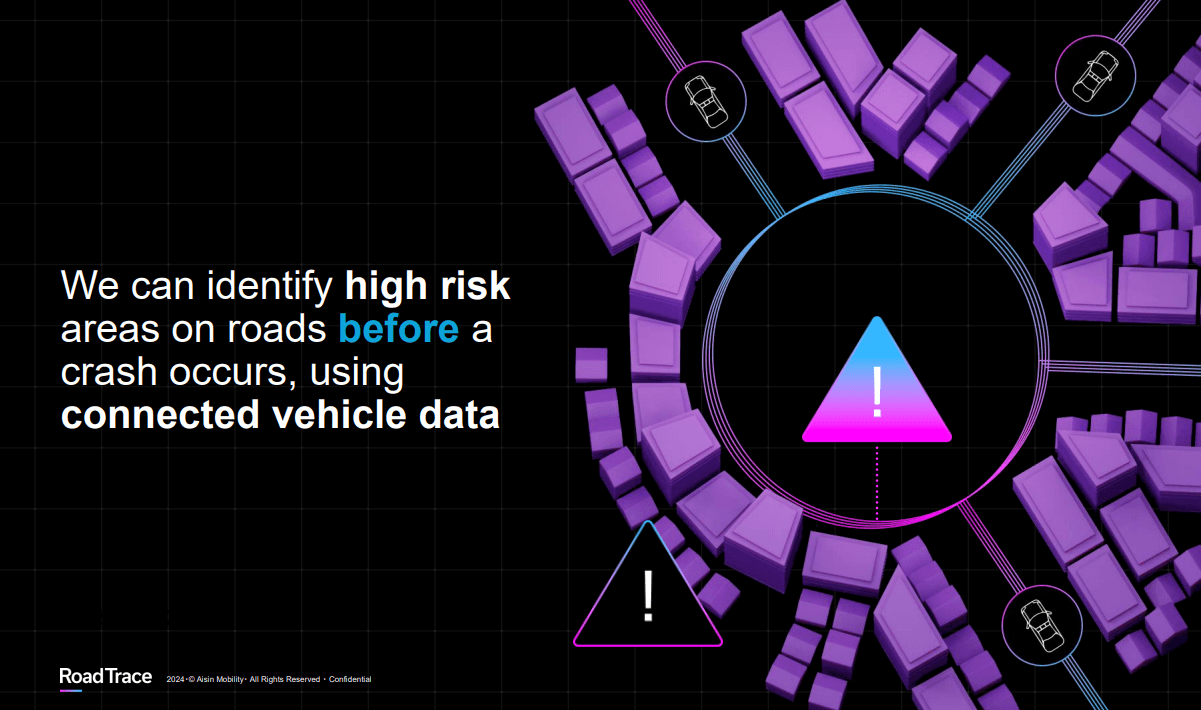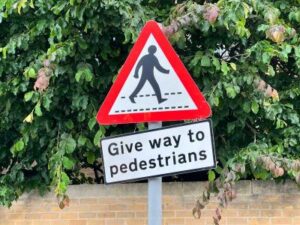Road safety experts and bereaved families are uniting to urge local authorities, safer roads partnerships and police forces to adopt a new Vision Zero tool designed to identify and address high-risk locations before crashes occur.
They warn that if the UK is to achieve Vision Zero – the goal of eliminating road deaths and serious injuries by 2040 – authorities must take an urgent, proactive approach to road safety.
The RoadTrace Vision Zero tool uses harsh-braking data from connected vehicles to identify high-risk areas, so that authorities can address potential hazards before crashes happen. It is proven to be three times more effective at identifying potential collision sites than traditional methods alone.
Traditional methods rely heavily on casualty data – meaning action is only taken after people are killed or seriously injured – which has led to stagnating road casualty figures for over a decade.
In 2023 alone, 1,695 were killed and 139,267 people were reported injured in collisions on the UK’s roads.
The call to action comes on the heels of Chief Constable Jo Shiner’s sobering remarks at the National Police Chiefs’ Council Roads Policing Conference 2024, where she warned that if we continue to take the same approach to road casualty reduction “we’ll reach Vision Zero in 150 years.”
Chris Taylor, whose 18-year-old daughter, Rebecca, was tragically killed in a road crash on the A508 in Northampton in 2008, understands the devastating consequences of reactive approaches.
Rebecca lost control of her car and collided with another vehicle after hitting a large pool of standing water caused by a blocked drain.
Since then, Chris and his wife, Nicole, have campaigned for urgent action on preventable road crashes hoping to spare other families from similar heartbreak.
Mr Taylor said: “We should not have to wait for a death for action to be taken, when there is technology that can identify something that is likely to cause an issue for other drivers.”
He added: “One recurring theme in the reports issued by coroners to prevent future deaths is that they often call for action on known issues.
“Many Reports to Prevent Future Deaths are related to highway safety, with a significant portion focusing on road design and maintenance. This includes concerns about bends, crossings, flooding, junctions, inspections, lighting, potholes, road layout, signage, and speed.
“It’s heartbreaking to see that in many cases, the location of a collision is identified as a known blackspot. As you can imagine, this offers no consolation to a family who has lost their loved one.”
Last month, RoadTrace received the Department for Transport’s Special Recognition Award 2024 for Transport Technology Innovation, in recognition of its pioneering data insights and the system’s ability to revolutionise road safety and prioritising asset management and maintenance.
The unique, data-driven approach offers a proactive solution to road safety that no other system currently provides.
Over the past two years, RoadTrace has seen significant success, including a major collaboration with Transport Scotland. The system is now in use by 15 highway authorities across the UK and last year was piloted as part of a National Highways project. In total, RoadTrace is partnering with approximately 50 highways authorities and road operators across five countries.
This achievement is the result of three years of co-development with local authorities, during which RoadTrace closely listened to their needs and built its methodology around producing its safety insights
Among the UK highway authorities already seeing the benefits of RoadTrace is West Sussex County Council, which has been actively using the Vision Zero tool since March 2024. The authority has been using the data to pinpoint precise locations of real driving behaviours, guiding the design of future improvements.
Chris Stark, Group Road Safety Manager at West Sussex County Council, said: “RoadTrace is helping to transform road safety. By identifying high-risk areas through connected vehicle data and detailed harsh braking analysis, we have been able to prioritise critical areas on our network before collisions occur.
“This targeted insight is allowing us to prioritise the allocation of public funds more effectively to reduce collisions and serious injuries. The insights delivered by RoadTrace is empowering us to make data-driven decisions to improve road safety.”
Jon Munslow, Former Assistant Director of Highways Maintenance at Cambridgeshire County Council and Past President of the Local Government Technical Advisors Group, UK said: “RoadTrace brings a fundamental change to local highways road safety. Using vehicle data enables road safety teams to investigate potential collision sites with the confidence that they are focusing on the right ones at the right time,enabling action before someone gets hurt.
“RoadTrace is going to make our roads safer for all, quicker. It is, in my mind, our new best tool in the box for achieving Vision Zero on our roads.”






















